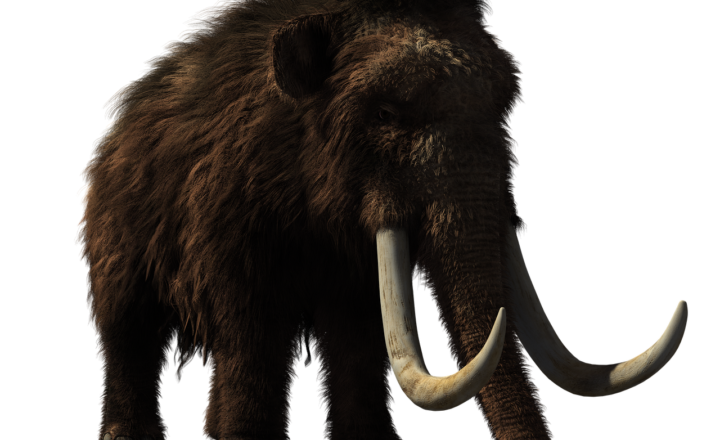What Caused the Last Ice Age? A Look at Climate Shifts and Earth’s Cooling Periods
November 14, 2024

The Last Ice Age, or the Pleistocene glaciation, was a significant period in Earth’s geological history that lasted from approximately 2.6 million years ago until about 11,700 years ago. During this time, vast ice sheets covered large portions of North America, Europe, and Asia, profoundly shaping the climate, ecosystems, and ultimately the human experience. The interplay of several factors led to this chilling phenomenon, from astronomical shifts and geological events to volcanic activity and changes in greenhouse gas concentrations.
1. Understanding the Ice Age: What Happened?
The Last Ice Age was characterized by glacial and interglacial periods, where massive ice sheets expanded and receded in response to changing climatic conditions. During glacial phases, temperatures dropped significantly, leading to a world dominated by ice and snow, punctuated by frigid temperatures that reshaped landscapes. Glacial periods would last for tens of thousands of years, followed by warmer interglacial phases where the ice retreated and temperatures rose.
The most recent glacial maximum occurred around 20,000 years ago, when extensive ice sheets covered much of North America and Northern Europe, including features like the Laurentide Ice Sheet and the Fennoscandian Ice Sheet. After this period, the Earth gradually warmed, culminating in the modern interglacial period we inhabit today.
2. Climate Shifts and Mechanisms Behind the Ice Age
Several scientific theories aim to explain the onset of the Last Ice Age and the climatic mechanisms at play. Below are some of the primary factors that contributed to this significant climatic event:
A. Milankovitch Cycles
Milutin Milankovitch, a Serbian mathematician, proposed the theory of Milankovitch cycles, which refers to the cyclical changes in Earth’s axial tilt, eccentricity of orbit, and precession. These cycles affect the distribution of solar energy received by Earth. The primary cycles include:
- Eccentricity: The shape of Earth’s orbit changes from circular to elliptical over a cycle of about 100,000 years. During periods of higher eccentricity, the differences in solar radiation are amplified, impacting glaciation levels.
- Axial Tilt: The tilt of Earth’s axis varies between 22.1 and 24.5 degrees over approximately 41,000 years. A greater tilt causes more significant seasonal differences, which can contribute to glacial formation in the winter months and retreat in summers.
- Precession: The wobble of Earth’s axis affects seasonal contrasts in the distribution of solar energy, completing a cycle approximately every 26,000 years. Precession can influence the timing and intensity of glacial and interglacial periods.
These astronomical factors are believed to have been critical triggers for the onset and duration of the Last Ice Age, leading to prolonged periods of cooling that enabled ice sheets to grow.
B. Tectonic Activity
Plate tectonics plays a significant role in Earth’s climatic shifts. The arrangement of continents and tectonic plates impacts ocean currents and atmospheric conditions. For example, during the Pleistocene, continental drift led to new oceanic and atmospheric pathways that could alter global temperatures.
Additional geological activity, such as the uplift of the Tibetan Plateau, affected monsoon patterns in Asia and contributed to the overall cooling effects in the Northern Hemisphere. This reorganization of landmasses may have helped foster ice accumulation during the glacial periods.
3. Greenhouse Gas Concentrations and Climate Feedbacks
The Last Ice Age was also influenced by lower levels of greenhouse gases in the atmosphere, particularly carbon dioxide (CO₂) and methane (CH₄). It’s important to note that the relationship between greenhouse gases and temperature is not only significant in the context of warming but also in the substantial shifts that can lead to cooling.
When glacial periods prompted growing ice sheets, the Earth reflected more sunlight, abating warming feedbacks. This cooling feedback loop reduced evaporation and, subsequently, the concentrations of greenhouse gases. As ice sheets expanded and accumulated more snow, winter climates became even colder. Ultimately, though greenhouse gases strategies act to induce warming, under certain conditions like glaciation, reduced concentrations can result in an overall colder climate.
4. Volcanic Activity and Solar Influence
Natural events like volcanic eruptions are also considered crucial contributors to climate change. Volcanic eruptions can expel vast amounts of ash and sulfur dioxide into the atmosphere, creating a temporary cooling effect that impacts global temperatures. Evidence suggests that during the Last Ice Age, notable eruptions may have occurred and contributed to the cooling of the climate.
Additionally, fluctuations in solar activity, recognized through the study of sunspot cycles, can also influence Earth’s climate. Solar output inconsistencies correlate with glacial cycles and create variability in climate patterns, leading to cooler phases that are recorded in ice cores.
5. Conclusion: The Interplay of Factors
The Last Ice Age remains a complex interplay of various climate forces, each interacting with one another to create a perfect storm of cooling conditions. The theories of Milankovitch cycles, tectonic movements, greenhouse gas concentrations, volcanic activity, and solar influences contribute to our collective understanding of glaciation. It is critical to analyze the interactions among these various elements when attempting to explain the Earth’s climatic history, as no single factor can be isolated as the definitive cause.
Today, as we face the effects of climate change in contemporary society, reflecting on historical periods such as the Ice Age allows us to grasp the dynamics influencing our planet’s climate. By studying the past, scientists and climatologists can strive to predict the potential impact of current and future anthropogenic influences on the climate systems and ice sheets worldwide. Understanding the past may help mitigate the adverse effects of today’s climate crisis and promote sustainable living for future generations.







